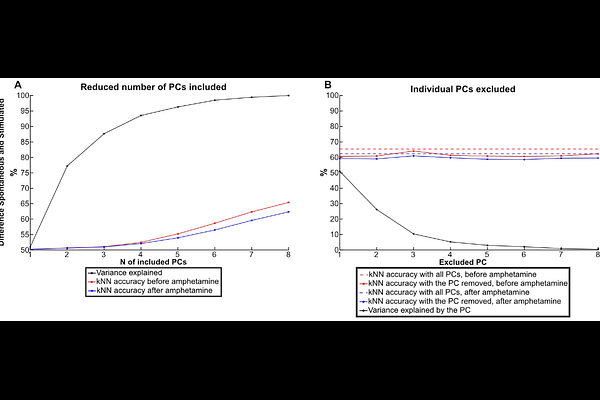D-amphetamine alters the dynamic ECoG activity distribution patterns in the rat neocortex

D-amphetamine alters the dynamic ECoG activity distribution patterns in the rat neocortex
Mellbin, A.; Jörntell, H.; Bengtsson, F.
AbstractAmphetamine has widespread effects on multiple neurotransmitter systems, potentially altering the physiological connectivity and network dynamics across various regions of the brain. In this study, we investigated the effects of D-amphetamine using our previously published approach where electrocorticogram (ECoG) recordings from eight cortical areas provided a coarse estimation of the global activity distribution patterns across sets of neuron populations. Changes in these activity distribution patterns were quantified with Principal Component Analysis (PCA) and k-Nearest Neighbors (kNN) classification. We found that D-amphetamine significantly altered the activity distribution patterns both for spontaneous activity and for activity recorded during ongoing tactile stimulation. It also reduced the difference between spontaneous activity and activity during ongoing tactile stimulation, which suggests that amphetamine reduced the organization in the network activity and could potentially explain hallucinations under the influence of amphetamine. Each of these changes were distributed approximately evenly across each dimension of the principal component space. This indicates that amphetamine impacts cortical network dynamics broadly and in multifaceted ways, compatible with the system-wide presence of the receptors that amphetamine interferes with. Our data indicates that relatively low doses of D-amphetamine can induce changes in brain activity distributions that are measurable potentially also by non-invasive EEG electrodes.